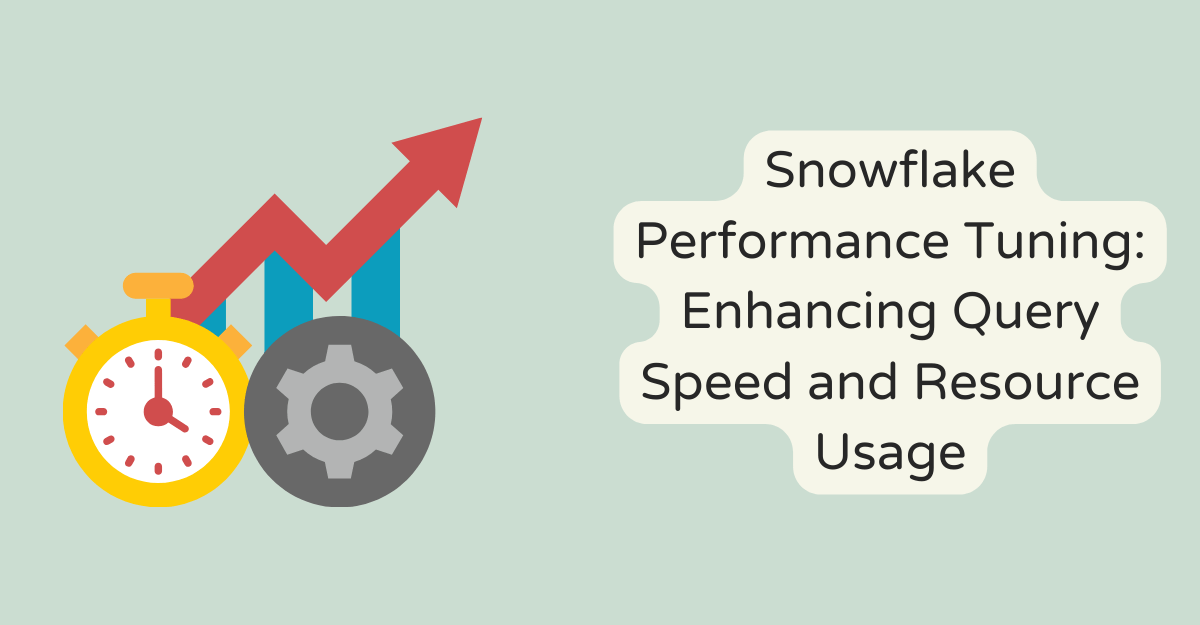
Snowflake Performance Tuning: Enhancing Query Speed and Resource Usage
Organizations rely heavily on efficient data processing to gain insights and make informed decisions in the data-driven world. Snowflake, a cloud-based data platform, has emerged as a powerful tool for managing and analyzing vast amounts of data. However, to fully leverage its capabilities, it’s crucial to fine-tune its performance for enhanced query speed and optimized resource usage. This article dives into the strategies and best practices for tuning Snowflake performance to maximize efficiency and productivity, exploring how to optimize Snowflake for peak performance in diverse data environments.
Understanding Snowflake Performance Tuning:
Before diving into performance optimization techniques, it’s essential to understand how Snowflake operates. Snowflake’s architecture is designed for scalability and performance in the cloud environment. It separates storage and compute resources, allowing users to scale independently based on their needs. However, without proper optimization, users may encounter performance bottlenecks that hinder query speed and resource utilization.
Key Factors Impacting Performance:
Several factors influence Snowflake’s performance, including data volume, query complexity, warehouse size, and resource allocation. Understanding these factors is crucial for devising effective performance-tuning strategies. Diving deep into these considerations empowers organizations to tailor their Snowflake environments to meet specific business needs and challenges.
Data Organization and Schema Design:
Optimizing data organization and schema design can significantly improve query performance. Properly indexing tables, minimizing data duplication, and partitioning large datasets can reduce query execution times and optimize resource utilization.
Query Optimization Techniques:
Efficient SQL query writing is essential for maximizing Snowflake’s performance. Techniques such as using appropriate join types, limiting wildcard characters, and avoiding unnecessary data transformations can streamline query execution and improve efficiency.
Warehouse Configuration and Sizing:
Choosing the right warehouse size and configuration is critical for balancing performance and cost. Scaling warehouses based on workload demands, leveraging multi-cluster warehouses for parallel processing, and utilizing auto-scaling features can ensure optimal resource allocation and enhanced query speed.
Workload Management:
Implementing effective workload management policies helps prioritize critical workloads and allocate resources efficiently. Assigning appropriate priorities to different queries, setting concurrency limits, and managing queue priorities can prevent resource contention and ensure consistent performance across multiple workloads.
Monitoring and Performance Analysis:
Regular monitoring and performance analysis are essential for identifying bottlenecks and optimizing Snowflake’s performance. Utilizing Snowflake’s built-in monitoring tools, analyzing query execution plans, and tracking resource usage metrics can provide insights into performance issues and guide optimization efforts.
Conclusion:
In conclusion, optimizing Snowflake performance is essential for maximizing query speed and resource usage in data-intensive environments. Understanding how to optimize Snowflake ensures organizations stay ahead in the ever-evolving data management and analysis landscape. Organizations can unlock the full potential of Snowflake’s capabilities by implementing best practices such as optimizing data organization, fine-tuning queries, configuring warehouses effectively, managing workloads efficiently, and monitoring performance regularly. With a well-tuned Snowflake environment, businesses can accelerate data analytics processes, improve decision-making, and gain a competitive edge in today’s dynamic marketplace. Embracing these strategies is crucial for organizations striving for excellence in data-driven decision-making and long-term success.






